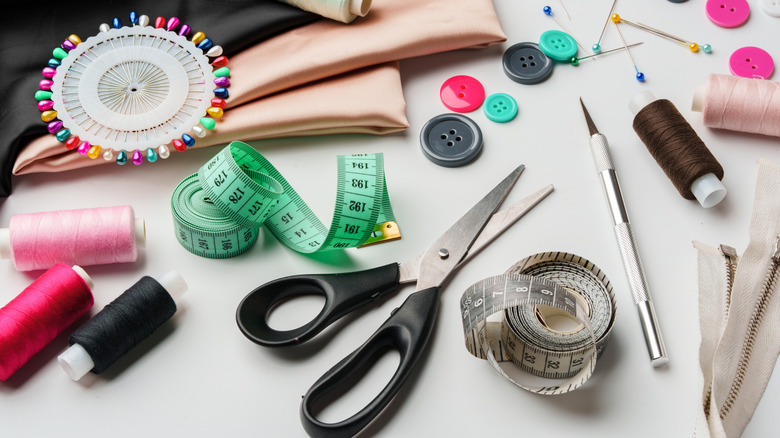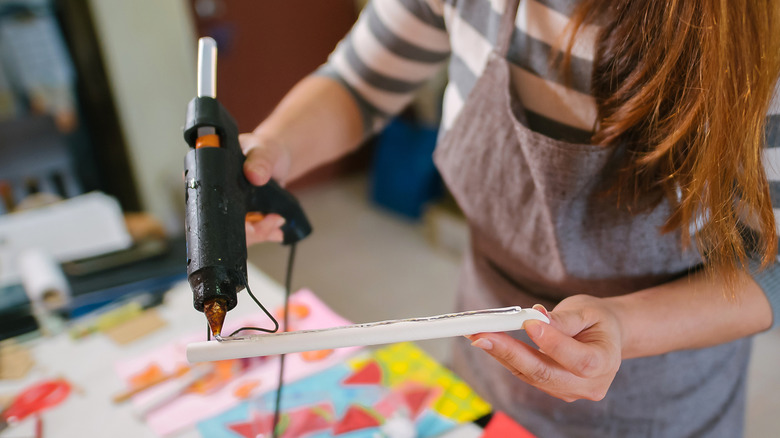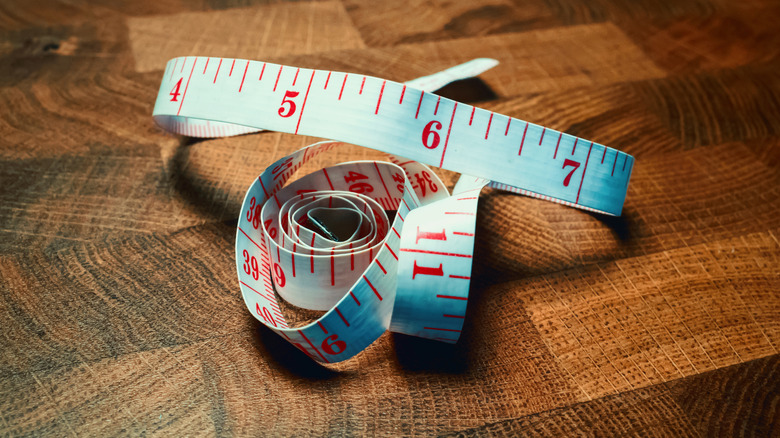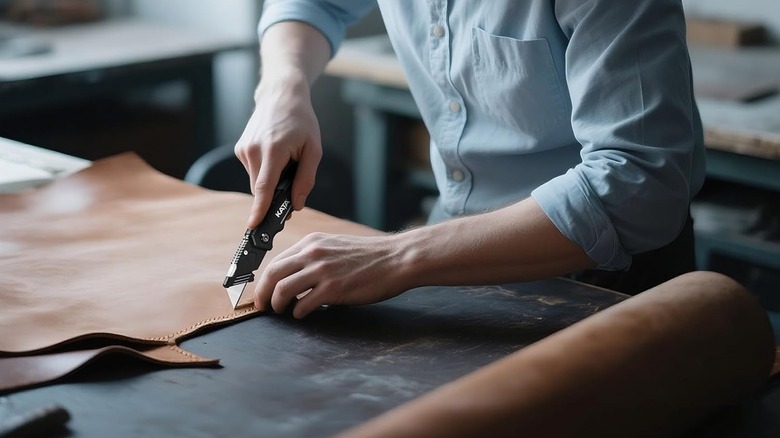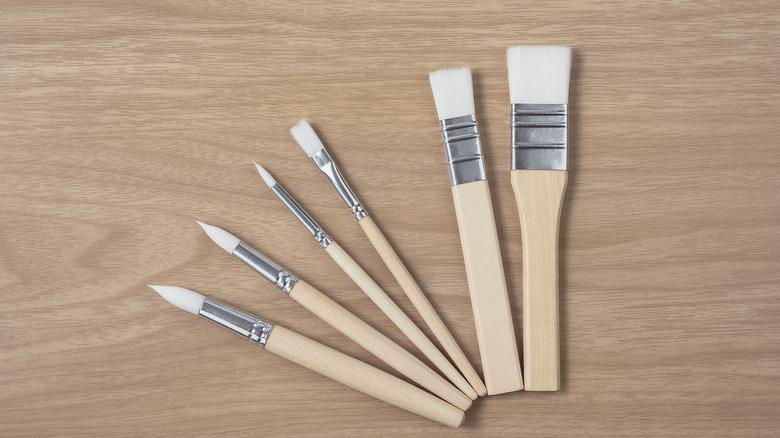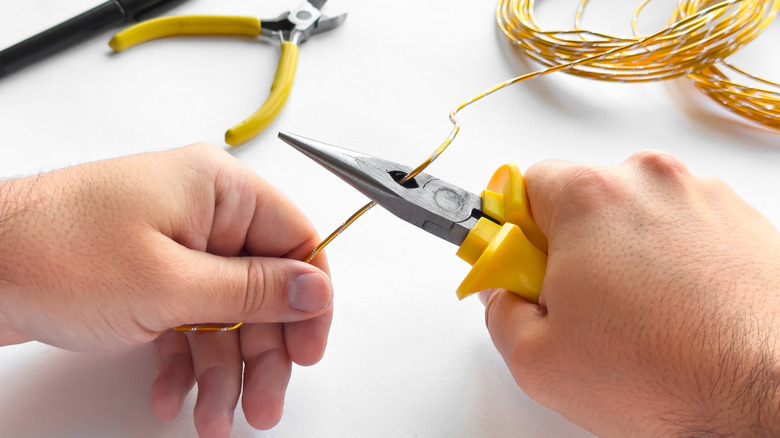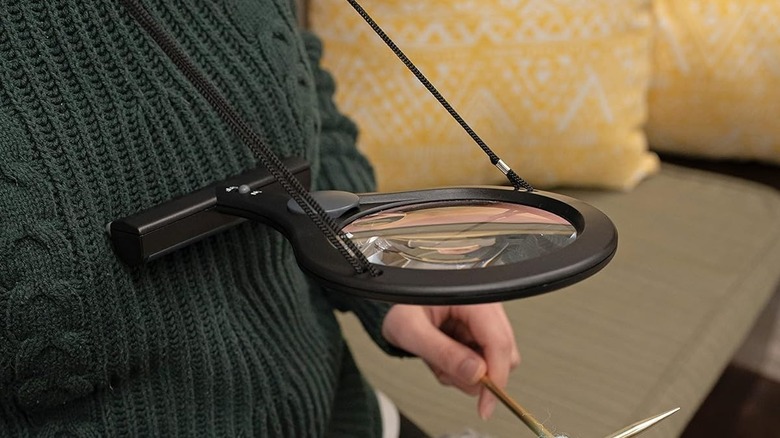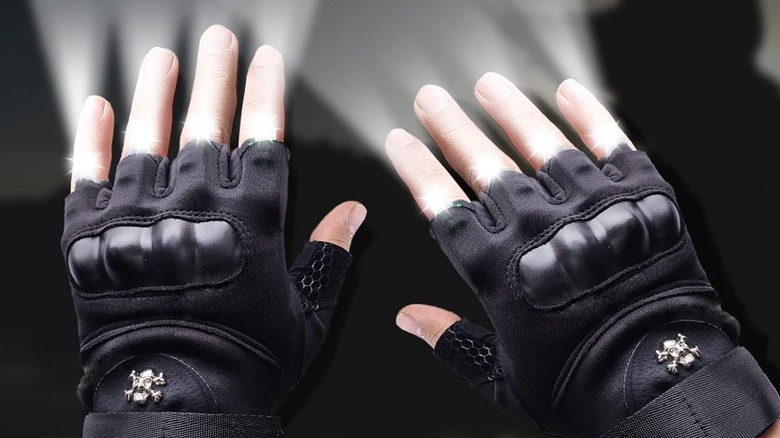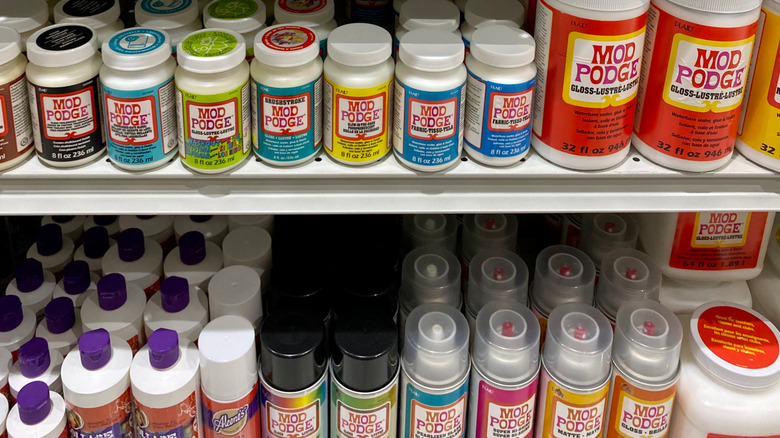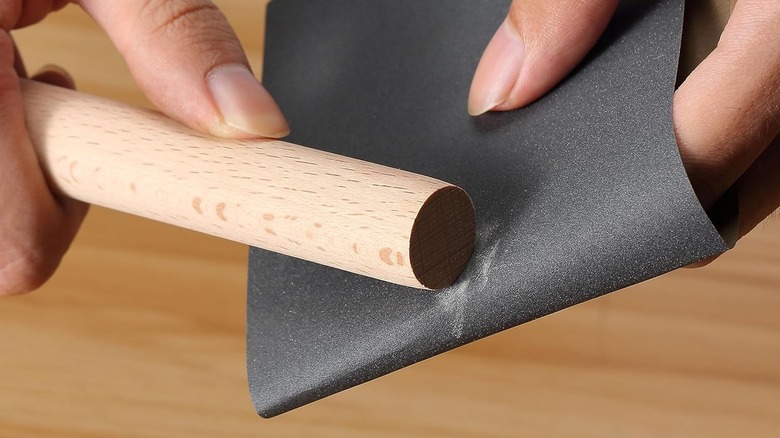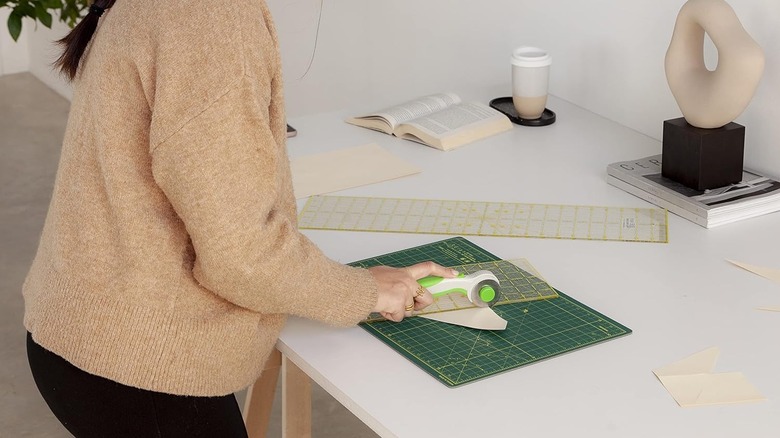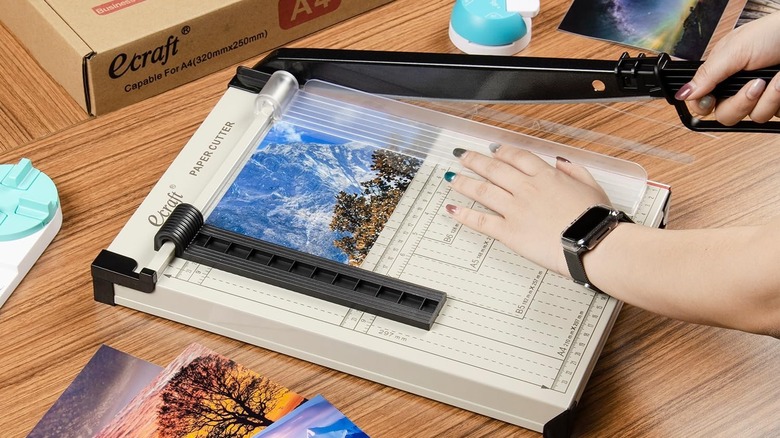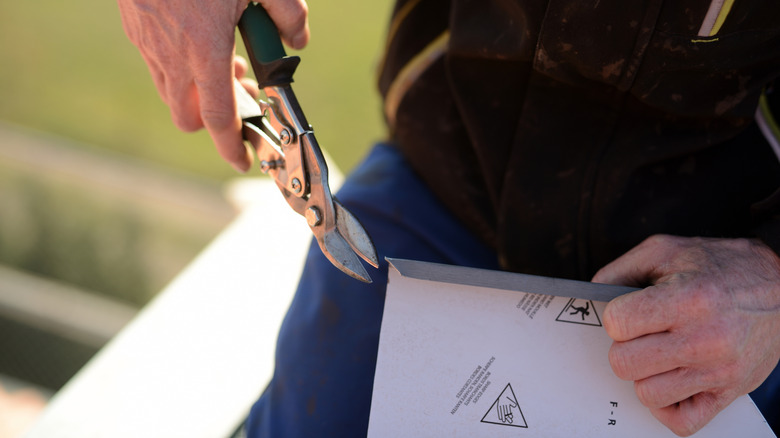14 Tools & Supplies That Every DIYer Needs To Own
We may receive a commission on purchases made from links.
Delving into DIY craft projects is a great way to explore your more creative side. All it takes is a few standard tools to create unique household solutions and one-of-a-kind home decor. The best part? Most of the tools are cheap or low-cost. The hard part is figuring out how to start building a DIY tool and supply collection.
Below are 12 tools and supplies that every crafting aficionado should own. These products are useful across a broad range of projects, including beading, jewelry making, painting, scrapbooking, sewing, and other crafting trades. They make work easier, more efficient, and more precise. You don't have to buy the best brand on the market, and many of these tools have cheaper models and designs ideal for small, homemade knick-knacks. Read on to learn why you should add these items to your collection and what features to look for to ensure you get the most practical product for future DIY endeavors.
Hot glue guns work when all else fails, and mistakes are usually easy to remove
Many people remember hot glue guns from summer camps and art classes, but they're also useful for home DIYS like popsicle stick projects. Glue guns are easy to work with; many just need to be plugged in, given a minute to heat up, and they're ready for use. They create sturdy bonds that dry within a minute, which is quick compared to other glues that take minutes to hours to set. Another added bonus is that standard glue guns are nontoxic. They don't release a strong smell into the air, rooms don't usually need ventilation, and there's minimal cleanup involved. When glue does spill, it's easy to pick dried pieces off hard with your fingers.
Hot glue guns have more variety than people realize. For casual projects, Hobby Lobby's Mini High-Temp Glue Gun is cheap, heats and cools within minutes, and is very straightforward to use. If you intend to do more precise work or hours-long projects, the Surebonder Cordless Hot Glue Gun is wireless and has a heated base, so you have somewhere to set it down while crafting. The Surebonder brand also makes value packs of glue sticks that are compatible with both glue guns, which you can find on Amazon or popular crafting stores and big box retailers.
Flexible tape measures have more versatility for various projects
Everyone raves about standard tape measures, but they seem to forget that there's a fabric version of this multipurpose measurer. Flexible tape measures can bend around non-linear objects, making it easier to craft with unique or soft items. They're less bulky than standard retractable tape measures, making them more portable and easier to measure without another person's assistance. They're especially useful for sewing projects, but also work for other DIY crafts like making jewelry, keychains, and scrapbooks. The only caveat is that they get stretched out and distorted over time. At this point, they should be thrown away and replaced because these imperfections cause imprecise measurements.
Flexible tape measures don't have to be fancy, but you should look for ones made of fiberglass https://wp.looper.com/wp-content/tmp/2198896293.jpgor vinyl-coated cloth, as they are more durable than cheap plastic. The tape should also have both inches and centimeters for reference, saving you the extra work of making conversions. ZeQi's Double-Sided Fiberglass Tape Measure meets these requirements and comes in a pack of two, providing a backup in case the first one is lost or ruined.
Utility knives and box cutters are useful for indoor and outdoor crafts
Every avid DIYer comes across a project that needs slicing or cutting. A utility knife or box cutter is an indisputable essential, as these sharp tools slice through cardboard, paper, plastic, and rope. They work for jobs of all sizes and are useful for opening stubborn packaging on other DIY tools. It's also easy to keep your utility knife blade ready to slice by sharpening it in just a few steps.
A good utility knife should have a stainless steel blade, an ergonomic handle, a blade retention system, and the ability to change the blades. An ergonomic handle ensures your hands don't slip and get caught in the blade, while a retention system is designed to keep the blade from accidentally popping out. Most DIYers will benefit from the Bibury Utility Knife, which has a stainless steel blade and 10 replacement blades, a release button, and a non-slip handle. If you prefer to do more delicate projects and need a blade for trimming and stripping smaller items, WorkPro's Premium Utility Knives might be a better fit. These blades are slimmer for more precise movements and have many of the same features as the Bibury knife: a retractable and lockable blade and replacement stainless steel blades.
Keep a set of assorted paint brushes for painting and staining
Paint brushes are useful for painting jobs using latex, oil-, or water-based paints and finishes. Depending on the size and bristle type, they're also good for spreading glue and wood staining. It doesn't hurt to have one or two brush sets lying around for jobs as they come up, as they're useful for various projects, from refurbishing furniture to creating homemade decor.
Pick products with ergonomic handles for easy handling and sturdy bristles that won't flake off as you use them. When crafting, a soft brush leaves fewer brush marks and makes it easier to make a smooth finish during more detailed work. The Princeton Aspen 6500 Series Acrylic Paint Brushes come in various sizes and are soft but firm enough to do detailed work without feeling scratchy. They're also ergonomic, making them comfortable to handle for long periods. When dealing with bigger projects with more surface space to cover, the Genixart Double Thick Chip Paint Brush Set works with paint, stains, finishes, sealants, resin, and adhesive glues. It's less precise than the previous set but more versatile. As a DIYer, it's up to you to decide which brush set best fits your usual projects.
Pliers are a pivotal tool for wire crafts
Pliers are among the tools every homeowner should have, and they should be in a DIY toolkit as well. They're great for crafting jewelry, wire wreaths, and beaded keychains and decor. There are many plier types but the best for DIYs are flat nose and needle nose pliers. Needle nose pliers are extremely precise with their thin and lengthy blades. They're great for crafts that use tiny pieces like beads, rhinestones, and other tiny embellishments. Some needle nose pliers are angled to make it easier to twist and manipulate wiring as needed.
When shopping for pliers, choose an option with a serrated tip to ensure they can easily grip objects. A smooth blade is less likely to damage your items, but it can be tricky to keep items from slipping out of the grip. The blades should be made of stainless steel to ensure they don't rust and are strong enough to bend thinner metals. Carbon steel blades are also reputably sturdy but are prone to rusting if you don't oil them occasionally. The pliers should also have ergonomic handles so you can grip them comfortably. Foam is easier to handle for long periods of time, but most pliers come with a rubber or PVC grip. The Duratech Long Reach Needle Nose Pliers Set comes with two pliers with a straight and angled blade shape. With their carbon steel, non-serrated blades, and ergonomic, anti-slip handles, they're ideal for DIY crafts.
Magnifiers can always help with more precise DIY projects
Don't doubt the usefulness of magnifying glasses just because you're young and have great vision. Magnifying glasses enlarge items anywhere from 2 to 60 times bigger than normal, making working with tiny crafting tools and supplies easier. These glasses also make it possible to read the fine print on instruction manuals, see and count stitching in fabric, and gauge the precision of paint strokes.
A magnifier of 2x, 3x, or 4x should be sufficient for crafting purposes. Any higher than that may enlarge your view too much. For reference, a 5x magnifier enhances your vision to see the equivalent of three words in a standard book, which may overdo it. Pick a hands-free design, ensuring you don't have to hold up the glass while trying to work on a project. There are magnifiers attached to stands, or that hang around a person's neck, leaving both hands free. Some also have battery-powered lights to improve sight. Try the MagniPros 3x Large Full Page Magnifier if you often craft on flat tabletops and prefer a bigger window of view. There's also the Carson LumiCraft Magnifying Glass with Light that magnifies up to 4x while casting light. This magnifier wraps around a person's neck and sits on their chest, making it far more portable.
Flashlights seem niche but are useful for most DIY projects
Light is vital for distinguishing details during a DIY project; sometimes, lamp and overhead lighting isn't enough. If your room is cozy with ambient lamps but doesn't have much task lighting, there are beautiful home lighting ideas to maximize productivity. However, a simple but reliable flashlight aids in crafting enterprises. Focusing a flashlight on one area reduces mistakes when painting, gluing, sewing, and doing other precise jobs. It also makes it easier to spot previous mistakes.
Even better than a traditional flashlight is an LED, hands-free flashlight. LED lights are nontoxic and 100% recyclable, and perform far better than incandescent lights. They require less power to work, put out more light and less heat, and light up instantly. Look for hands-free models that allow you to use both hands for tasks rather than using one to direct light. There are many hands-free flashlights on the market. A headlamp or clip-on light is the best option that stays out of the way while illuminating your line of vision. Light-up finger gloves also have an appeal, but can be frustrating if you can't point your hands in the right direction while crafting.
Mod podge provides a protective coating for future wear and tear
Mod Podge seems unremarkable at a glance, but there are many creative ways to use it to create a decoupage in your home. Mod Podge is also useful for bonding crafting materials and putting a clear, protective finish on work. It's versatile and comes in various formulas for niche purposes. The steps are simple: apply the glue with a foam or bristle brush, then wait an hour for it to dry.
Traditional Mod Podge comes in a glossy, matte, or satin finish, and you can find Mod Podge Complete Decoupage Kits with both the glossy and matte options and additional foam brushes. However, there are also unique formulas for more eccentric endeavors, such as Mod Podge Dishwasher Safe Waterbased Sealer. This Mod Podge is best for items intended for humid bathrooms or kitchens or meant to be placed outdoors around natural rain and humidity.
Assorted sandpapers are good for smoothing surfaces and removing imperfections
Sanding is necessary in many DIY projects, especially those requiring painting. Either traditional or liquid sandpaper smooths out surfaces, removing imperfections and remnants of old sealants to create a blank canvas that easily absorbs paints and finishes. This can be used on various surfaces, including wood, metal, and laminate. Although primarily used to prep surfaces, sandpaper is also useful for intentionally scuffing surfaces to create a rustic look.
There are three main kinds of sandpaper to choose from: liquid, sheets, and sponges. Use liquid sandpaper instead of sheets for DIY projects when you're working with relatively smooth surfaces. It's also known as a deglosser and is good for dissolving minor imperfections in a wood finish without damaging the wood itself. It's easier to use in hard-to-reach places or on unique shapes that would be difficult to sand with traditional sandpaper. Traditional sandpaper and sponges are better for tasks that are less niche. Opt for an assorted pack of sandpaper with a wide variety of grit sizes. The grit sizes indicate the roughness of the paper. Coarser grit has a lower number, around 40 to 60. In comparison, super fine grit has a higher number, over 500. The finer the grit, the gentler it is, while coarser grit is much rougher on surfaces. Most home DIY sanding projects will only require grit sizes between 60 and 220, so you should opt for a Romeda 8-Pack Sanding Sponge with multiple grit sponges in the aforementioned size range.
A cutting mat that also has measurements can be handy for home sewing projects
If you're regularly slicing with a box cutter or scissors, a cutting mat should be the next item on your essential DIY list. Cutting mats protect work surfaces, like desks and countertops, by keeping blades from mistakenly slicing furniture. They often have numbers and a grid system that show measurements while working. They're most often used for sewing, reupholstering, and scrapbooking ventures.
Ideal mats have the aforementioned features and 45-degree and 60-degree angles for cutting unique shapes. They should also have clearly defined grid lines in a contrasting shade to the base mat color. Cutting mats come in sizes from 12 by 12 inches to 30 by 60 inches, and the larger you go, the more projects you can use it for. Before picking a cutting mat, make sure it will fit on your favored work surface by measuring the dimensions beforehand. Craftspeople with copious amounts of space may want to invest in a Martelli Extra Large Color Contrasting Cutting Mat, which comes in two colors to maximize contrast. People with smaller budgets, spaces, and projects can use the Elan Cutting Mat A3 Green, which is budget-friendly and a dark green color with white and yellow lines to provide contrast.
A paper cutter with scoring tool is a must for paper crafts
Another must-have slicing device is a paper cutter, which comes in handy for various trimming tasks. This tool crops photos for frames and scrapbooks, takes extra bordering off thin plastics, and slices paper for bookbinding and other crafts. It's designed to cut straight and even, keeping work precise and professional without any extraneous effort.
When picking a paper cutter, you should have three main considerations: the size, strength, and blade type. The larger the paper cutter, the larger projects it can handle. Standard dimensions are usually 12 to 18 inches long and 8 to 14 inches wide. Consider how many papers you typically need to slice at a time, as most blades can handle up to five sheets. Heavy duty-versions can handle over a hundred. A German steel blade is ideal, but the blade type isn't too important if you're only slicing a few sheets at once. The Ecraft 12-inch Guillotine Paper Cutter is roughly 12 by 16 inches, includes a positioning ruler, and has an ergonomic handle for its guillotine-style slicer.
Metal snips are essential for wreathmaking and tin crafts
There are various names for metal snips, such as tin snips or metal shears. These are great snipping tools to have on hand if you enjoy wreath making or working with metal wiring. They slice through sheet metal more easily than standard scissors, enabling users to make clean cuts through stainless steel, copper, tin, and other common DIY metals. They're lighter to use than other metal cutting tools, making them more portable and versatile.
Pay attention to the handle color before settling on a pair of metal snips. Most of the time, yellow handles provide straight cuts, green cuts slightly to the left, while red cuts slightly to the right. This is important because the metal shape will lean in that direction. Pay attention to the blade shape; serrated edges grip items easier but leave tiny jagged cuts. A non-serrated edge doesn't grip as well but provides a smoother slice. The Hurricane 3 Piece Aviation Tin Snips Set includes all three handles and provides clean cuts, which are usually preferred when working with thinner metals.
